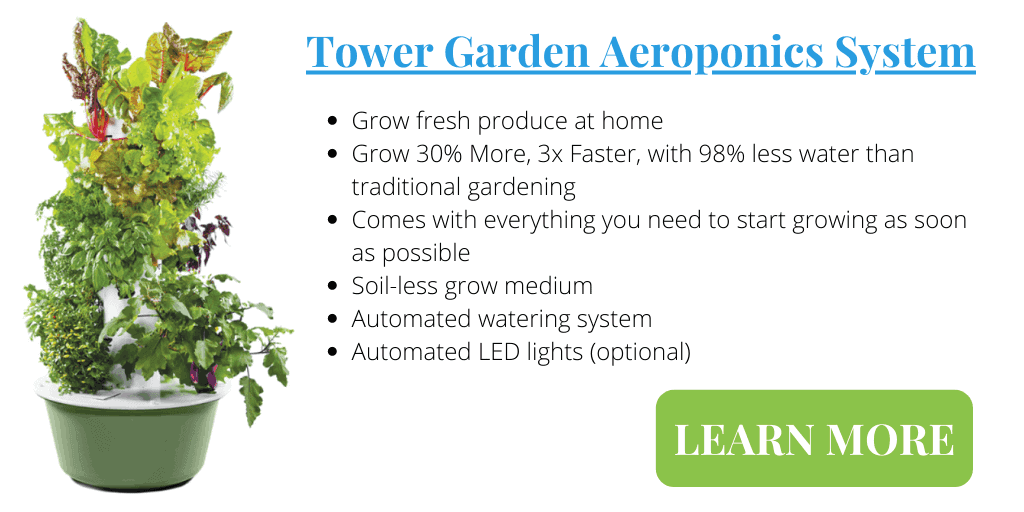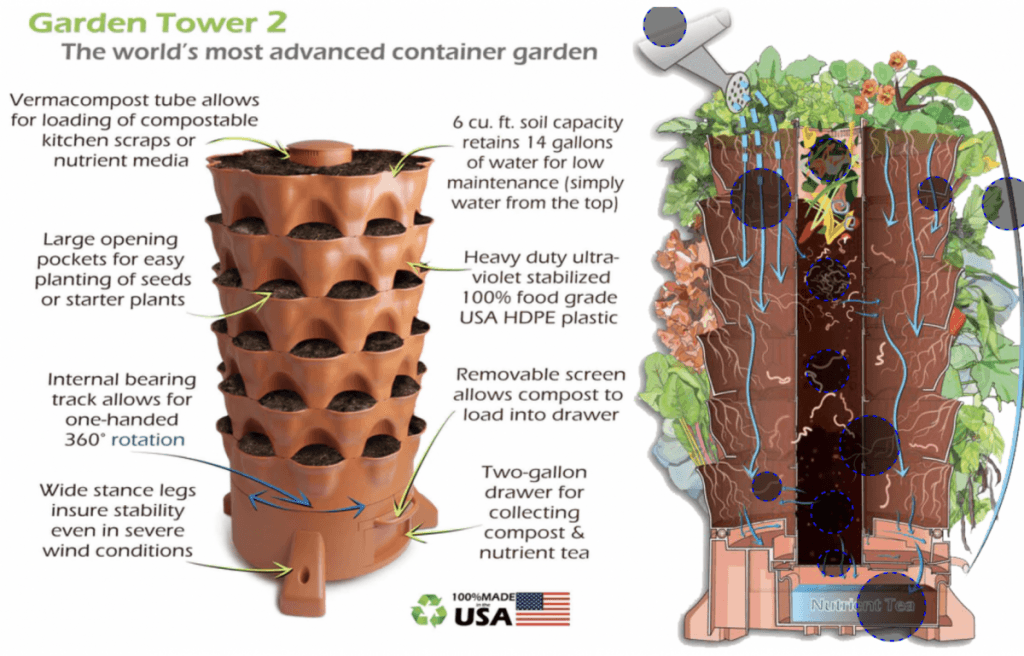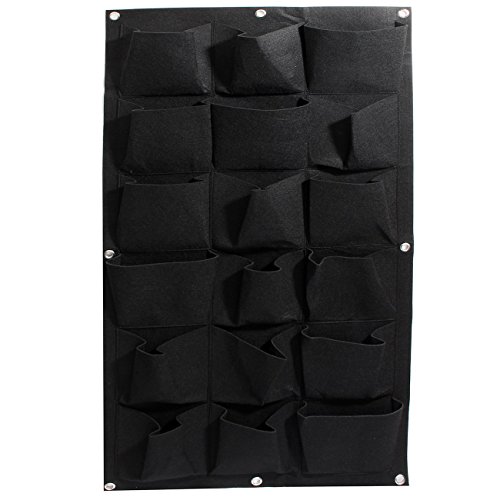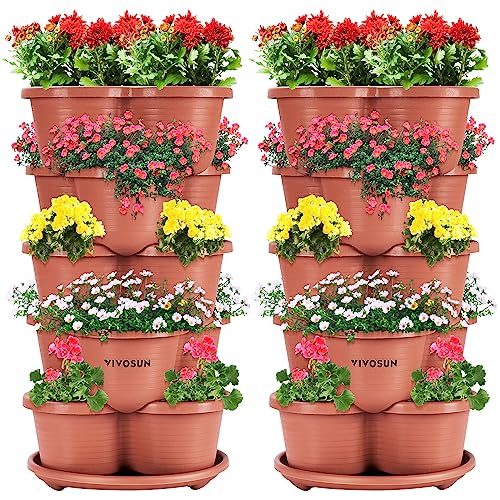Vertical gardens may give one the impression of being high-tech and way outside of your budget. It’s true that some vertical garden set-ups can be quite expensive, but just like with regular gardening, there are always cost-effective alternatives.
A vertical garden is likely to cost between $150 and $300 initially if you build it using supplies from your local hardware store. The cost of a vertical garden depends on the size, whether it has automatic irrigation, the type of frame construction, and of course, the kinds of plants. Ready-to-install systems cost more than a DIY set-up.
Vertical gardening is a technique that I’ve used in my outdoor garden for many years to maximize growing space. Today there are all sorts of vertical gardening systems you can buy to create living walls or vertical vegetable gardens on your patio. Let’s discuss the various costs involved in setting up and maintaining a lush vertical garden.
Cost Factors In Setting Up A Vertical Garden
The initial installation cost of a vertical garden depends on a wide range of factors. Consider the following when budgeting for and planning a vertical garden:
- Is your garden indoors or outdoors?
- How large do you want your vertical garden?
- Will you water manually or use an irrigation system?
- Are you buying a ready-to-use system or building your own?
- What types of plants will you grow – decorative or edible?

Outdoor Vertical Gardening Is Cheap
The type of vertical gardening I have done for years is very cheap (mostly free, actually) because I garden outdoors. The only things I need to make my garden grow upwards instead of outwards are trellises and teepees.
It is very easy to find or make things to trellis your plants up against. Straight branches or stalks of bamboo work very well and are easily accessible.
In an outdoor vertical garden, you can get creative by upcycling things like old bicycle wheels, ladders, old mattress springs, or even rusty farm implements.
Of course, you can also buy ready-made trellises and teepees from a garden supply store or online. They are relatively inexpensive – a small teepee will set you back around $8 to $10, while a larger one costs around $20 to $25. You can buy a pack of bamboo stakes for only $10 to $15.
I put together a list of 7 different types of vertical gardens for more info and guidance.
Indoor Vertical Gardens Are Pricier
If you live in a high-rise building or your garden is way too small to grow the things you’d like, a living wall planter is the way to go. However, it does cost slightly more to garden indoors.
Living walls are a great addition to any space but how long plants last is a common question. Find the answer to this question and more in my article, How Long Do Living Walls Last?
To grow plants inside your house, you will need a structure to hold the soil and plants, as well as an irrigation system that does not allow the water to end up on the floor. Depending on how many windows you have, you may also need to install supplementary grow lights.
For a small indoor vertical garden system, you can expect to pay between $30 and $80. A larger, more comprehensive system will cost in the region of $150 to $300. However, the cost depends largely on the types of materials the units are constructed from.
Find out about The Best Soil For Vertical Gardening in my recent article
Size Matters When It Comes To Costing A Vertical Garden
The larger you want your vertical garden, the more you should expect to pay.
- A small vertical garden planter with four felt pockets costs around $80 on average.
- A larger one that can accommodate more plants in 12 pockets costs about $150.
- A nice big vertical planter with large pockets and a simple irrigation system will set you back about $200.
You can always grow your vertical garden over time, starting with a single unit and adding more units side by side. There is a wide range of products available at garden centers and online, making it easy to find a vertical gardening solution to suit your budget. Here’s a guide on How To Start A Vertical Garden.
- MEDIUM SIZE: 19.7" X 39.4" (50 cm x 100 cm), Built Well Enough For Growing Season, Can Match...
- EASILY FIXED: Can be Easily Attach To a Fence by Zip Ties and mounted on a wall using nails...
- ECO FRIENDLY MATERIAL: felt material, Holds moisture good and allows drainage and can breathe....
Automated Irrigation Vs Manual Watering In A Vertical Garden
It is far more efficient to install an automated irrigation system for your vertical garden compared to watering each plant by hand on a regular basis. However, an irrigation system will drastically increase the price of your vertical garden installation.
Drip irrigation and a timer will cost an additional $400 to $800, depending on the size of your vertical garden. This may seem steep, but you are paying for the convenience of not having to remember to water your plants or climb up onto a stool to water those hard-to-reach plants by hand.
Here’s a helpful article I wrote on How Often To Water A Vertical Garden.
DIY Vs. Ready-Made Vertical Gardens
It goes without saying that a ready-made vertical garden system is going to cost more than a system you build yourself from materials of your choosing. The cost difference is quite dramatic:
- A DIY vertical planter system built from recycled and upcycled materials can be almost free. The materials you may need to buy will only cost around $20 to $80, and your labor comes without a price tag.
- A pre-made vertical garden or living wall typically costs around $100 to $225 per square foot, including installation costs and plants.

Some Plants Are Cheaper Than Others
What you plan to grow in your vertical garden makes a massive difference in how much you can expect to spend. Large-leafed, tropical houseplants cost a lot more individually than a few packets of herb and vegetable seeds.
Planting seed is definitely the cheapest way to fill a vertical garden. However, the hidden cost is the time it takes for the seeds to germinate and grow to fill your living wall.
Beautiful trailing houseplants cost between $20 and $50 per plant, so it will cost you a lot to plant up your vertical garden.
A packet of seeds often costs less than $2. Because you get so many seeds, you can grow as many plants as your heart desires (or can fit in your vertical garden).
What Is the Average Cost Of A Vertical Garden?
Now that you have an idea of the individual cost factors involved in setting up a vertical garden let me answer the question of the average cost of a vertical garden.
If we consider the cost of the actual vertical garden structure, moisture barrier fabric, an irrigation system, the plants and professional installation, an indoor vertical garden is likely to cost between $150 and $200 per square foot.
For the sake of comparison, an artificial living wall costs around $70 per square foot.
- High-quality Product: Thick, high-quality PP materials can be used repeatedly without fading,...
- Different Combinations: You can stack 2 or 3 or 4 or 5 tier; This planter can be hang with...
- Space Saving: The vertical stacking saves space to the most; You can grow many healthy plants...
How To Build A Vertical Garden
If the cost of a professionally installed, ready-made vertical garden is outside of your budget, worry not! The cost of buying all the materials and building a vertical garden yourself is significantly lower.
Here’s how you can build your very own living wall:
Choosing A Vertical Location For A Garden
Start by choosing a wall. If you live in a very small space, your options may be limited, but if space is not a concern, choose a wall that gets a good amount of sunlight in the morning. If there is a particularly ugly wall you would like to beautify, the decision is simple.
Building A Vertical Garden Frame
Once you have chosen a wall, you need to build a frame for your vertical garden. PVC is lightweight, cost-effective, and will not rust or rot with moisture. Buy 3/4-inch PVC pipe, elbows and 4-way joints and simply click them together to build a sturdy frame.
Waterproofing Your Vertical Wall
Next, you need to attach waterproof plastic sheeting to the frame. Expanded PVC sheets work very well to keep water away from the wall (they cost around $2 per foot). The easiest way to secure the plastic sheet to the frame is to use screws.
Creating Planters In The Wall
A double layer of fabric needs to be attached to the frame next. The best material to use is regular felt carpet padding (it only costs about $1 per square foot!).
Secure the felt to the frame using galvanized screws or staples. This step is critical because the fabric will need to support the weight of the soil and plants. Imagine you are stretching canvas on a frame – ensure there are no bumps or buckles.
Creating A Vertical Irrigation System
Next, you need to install an irrigation system if you do not plan on hand watering the plants. Poly tubing and standard irrigation valves and fittings are very simple to work with.
All you need is a tube going across the top of each row of plants with drippers spaced 2 to 3 inches apart. Add an irrigation timer to really make gardening easy for yourself. Program it to water for 10-15 seconds 5 times a day – this way, you will avoid overwatering.
- SAVE TIME AND EFFORT: This plant watering kit has everything you need to get started with drip...
- INSTALL IN 3 EASY STEPS: 1) Connect timer and tubing to water source; 2) Lay out tubing; 3) Use...
- IDEAL FOR ANY LEVEL GARDENER: Easy to customize, install, and operate; Kits contain all the...
Once the irrigation is installed, you can attach the frame to the wall. The best method is to use brackets screwed into the wall and the frame. This is the safest way to hang a relatively heavy structure once it is full.
Panting A Vertical Growing Space
Next, it’s time for the fun part – filling your vertical garden with plants! Choose plants according to your climate and the amount of sunlight the wall is exposed to. Using a razor blade, make a cut in the felt fabric wide enough to fit the roots of the plant.
Gently remove as much soil as possible from the roots and place it into the cut you made. The roots should be between the two layers of felt. To make a secure little envelope around the plants’ roots, use a staple gun to make a half-moon around the bottom of the plant. It is best to start planting from the top of the frame and move downwards.
The Cost Of Maintaining A Vertical Garden
Just like regular gardens need care and maintenance, so do vertical gardens. They require a surprising amount of time and commitment to maintain.
Because the plants are growing in wet fabric without nutrients, you will need to apply fertilizer every two weeks. Simply spray the plants with a diluted organic liquid fertilizer.
If you are growing large, leafy tropical plants, they will need to be wiped down regularly to remove dust from the foliage so that they can photosynthesize properly. At the same time, you should check the plants for pests or diseases.
Here and there, you will inevitably lose a plant or two, and you will need to replace them to avoid having gaps in your living wall.
It is also important to check on the irrigation system regularly to make sure it is working the way it should.
If this all sounds like a lot of work to you, you can always hire a professional vertical garden maintenance service. They will take care of all of the above for a reasonable fee.
Maintaining a vertical garden yourself costs very little – you just need to buy the fertilizer and invest your time.
The cost of professional maintenance services to maintain your vertical garden depends on where you live and the size of your wall. Generally, you can expect to spend around $100 per month.
Benefits Of A Vertical Garden
If you consider the benefits of a living wall in your home or workspace, the cost is completely justified! There are so many benefits to vertical gardening:
- You can produce your own food. Even if you are just growing your own herbs and some cherry tomatoes, it is fun and empowering to harvest your own produce.
- Improve air quality. Certain plants are able to absorb toxins from the air. Plants also produce oxygen and increase the humidity, making the air in your home healthier to breathe.
- Transform a boring space. The simple addition of a living wall or standing vertical garden structure brings life and interest to a room or patio.
- Being surrounded by plants is great for our mental health. There is a large body of research that shows how having plants in our home and workspaces improves our focus, creativity, and lowers anxiety.
- Vertical gardening is a form of artistic expression. Your garden is your canvas, and you are only limited by your imagination.
Conclusion
Vertical gardens are a wonderful way to reap the benefits of a regular garden in a fraction of the space. They do not have to cost an arm and a leg! One can build your own vertical garden for around $100 to $150 (or even less if you recycle and repurpose materials!).
If your DIY skills are not up to scratch, you can have a system installed for around $150 to $200 per square foot. They come complete with an irrigation system and plants.
Small, ready-made vertical gardening units are widely available from garden centers and online. Depending on the design, they cost between $30 and $80.



